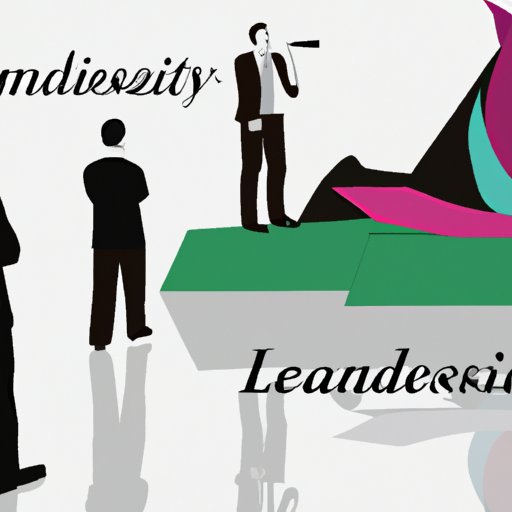Introduction
Visionary leadership is a type of leadership that focuses on innovation and collaboration. It involves inspiring and motivating others to strive towards a common goal while also being able to recognize opportunities and take risks in order to achieve success. This style of leadership is important for organizations because it can help them stay ahead of the competition and remain relevant in an ever-changing business landscape.

Interview a Visionary Leader to Learn Their Strategies
One way to gain insight into the strategies used by visionary leaders is to interview one. By asking questions about their leadership style and experience, you can gain insight into what makes them successful. When interviewing a visionary leader, you should ask questions such as:
- What qualities do you believe make a successful visionary leader?
- How do you encourage collaboration and innovation within your organization?
- What principles do you use to guide your decision-making?
These questions can help you gain a better understanding of the strategies and principles that a successful visionary leader uses. By understanding these strategies, you can begin to implement them in your own organization.

Analyze Successful Leaders Who Embody Visionary Leadership
Another way to gain insight into visionary leadership is to analyze successful leaders who embody this type of leadership. Examine the characteristics of their leadership style, such as their ability to inspire, motivate, and innovate. Analyze their successes and failures, and identify the strategies they used to achieve success.
For example, Steve Jobs was known for his visionary leadership style. He had a clear vision of where he wanted Apple to go, and he was able to motivate and inspire his team to work towards that goal. He was also willing to take risks and push the boundaries of technology in order to create innovative products that changed the world.
Use Case Studies to Show How Visionary Leadership Can Succeed
Case studies are another great way to gain insight into how visionary leadership can be successful. Examine different types of organizations and how they have implemented visionary leadership. Explain how the leader used their strategy to achieve success, and identify the results of implementing this type of leadership.
For example, Southwest Airlines is a great example of how visionary leadership can be successful. The company’s CEO, Herb Kelleher, was a visionary leader who focused on customer service and innovation. He encouraged employees to think outside the box and challenge the status quo. As a result, Southwest Airlines achieved success by becoming the most profitable airline in the world.
Compare & Contrast Visionary Leadership with Traditional Leadership
It is also important to compare and contrast visionary leadership with traditional leadership. While both styles of leadership have their advantages and disadvantages, there are key differences between the two. Traditional leadership focuses on stability and control, while visionary leadership focuses on innovation and collaboration. Traditional leadership tends to be more rigid and hierarchical, while visionary leadership encourages creativity and risk-taking.
According to a study conducted by Harvard Business Review, “In traditional organizations, the emphasis is on efficiency and predictability; in visionary organizations, the emphasis is on creativity and entrepreneurship.”

Examine the Benefits of Visionary Leadership for Organizations
There are many benefits of having visionary leadership in place for organizations. Visionary leaders are able to inspire and motivate others to strive towards a common goal. They are able to recognize opportunities and take risks in order to achieve success. Visionary leaders can also foster collaboration and innovation within the organization, which can lead to new ideas and solutions.
Organizations can leverage visionary leadership by setting clear goals and objectives, encouraging collaboration, and rewarding success. This type of leadership can help organizations remain competitive in an ever-changing business landscape.
Conclusion
Visionary leadership is a type of leadership that focuses on innovation and collaboration. It involves inspiring and motivating others to strive towards a common goal while also being able to recognize opportunities and take risks in order to achieve success. This style of leadership is important for organizations because it can help them stay ahead of the competition and remain relevant in an ever-changing business landscape.
By understanding the strategies used by successful visionary leaders and examining case studies of organizations that have implemented this type of leadership, organizations can leverage visionary leadership and reap the rewards of having this type of leadership in place. Visionary leadership has the potential to transform organizations and help them succeed in today’s competitive business environment.
(Note: Is this article not meeting your expectations? Do you have knowledge or insights to share? Unlock new opportunities and expand your reach by joining our authors team. Click Registration to join us and share your expertise with our readers.)
